Kolam to celebrate Surya Pongal — part 2
The pot is a symbol of abundance and a recurring theme as well in the kolam designs during pongal. It is either shown with rice balls that pile up on top of each other or with milk froth foaming out of the mouth, like the overflowing milk rice preparation.
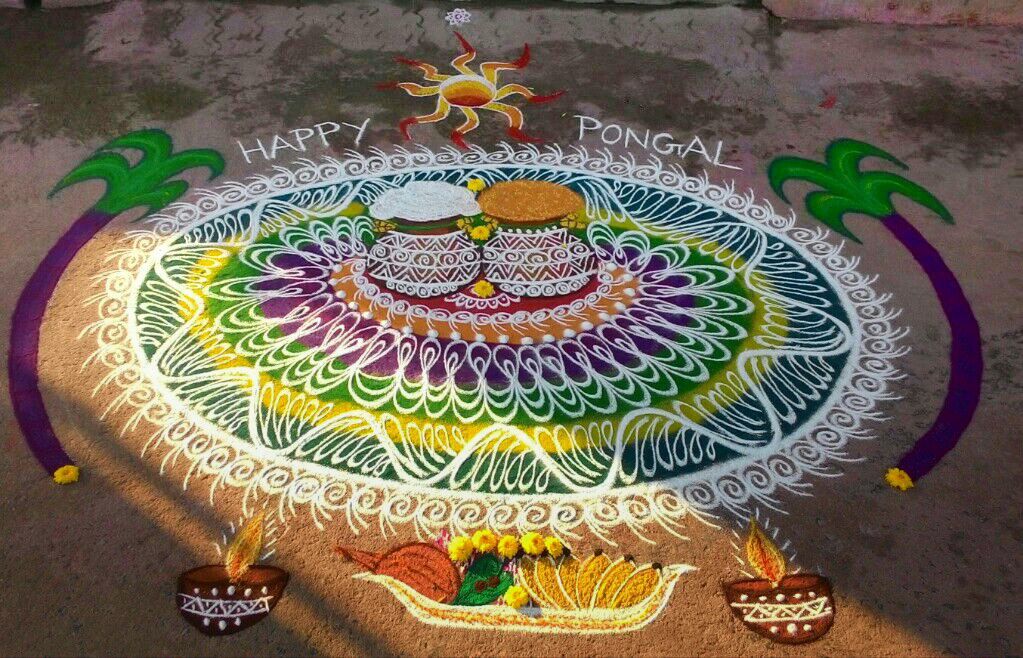
Shopping frenzy is always part of festivities anywhere in the world and a few days before Pongal, families rush to open-air markets to buy stalks of sugarcane topped with leaves, turmeric roots, mango leaves and also kuruthola or hanging decorations made by cutting and knotting the tender leaves of a coconut tree.
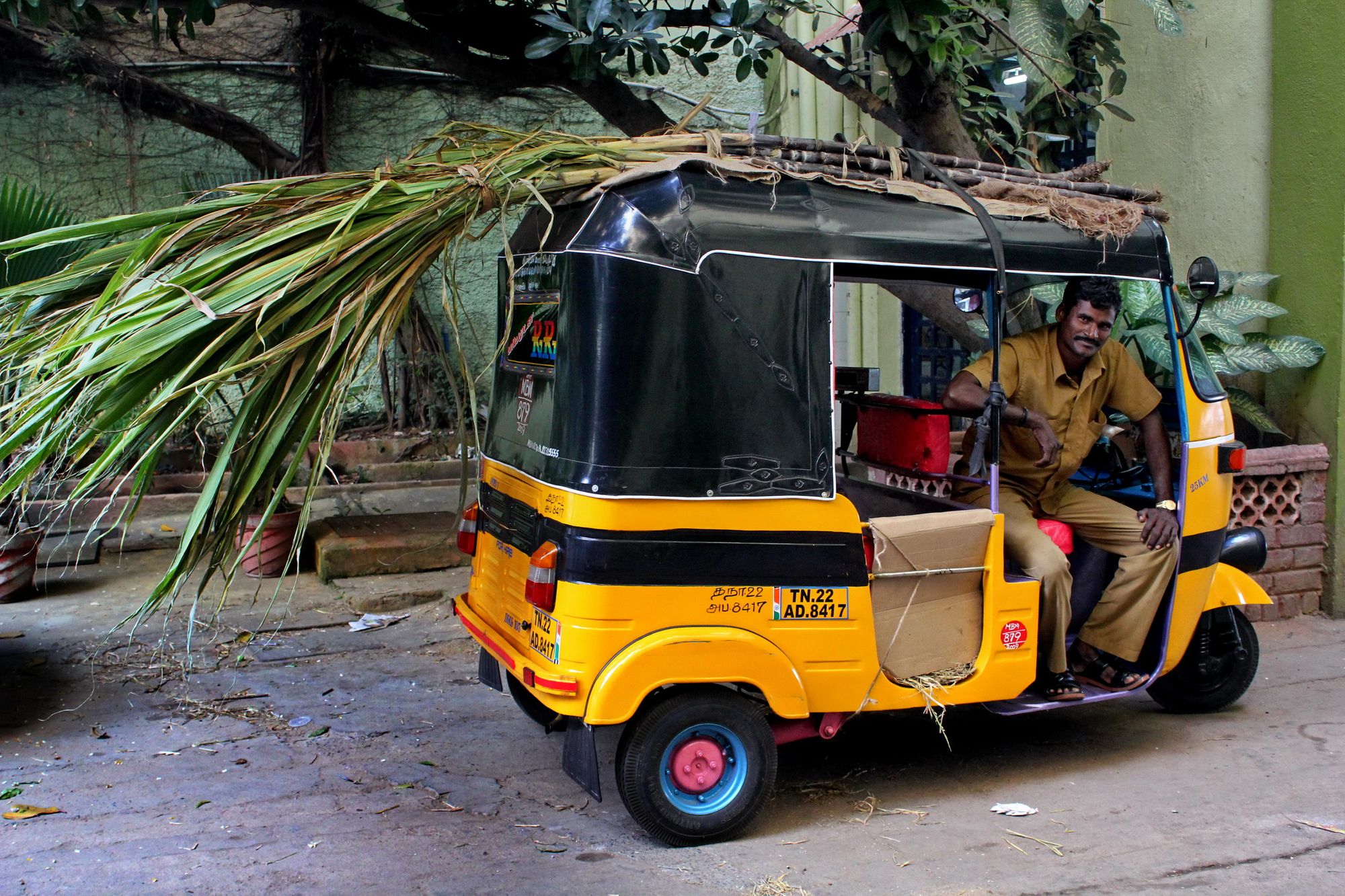

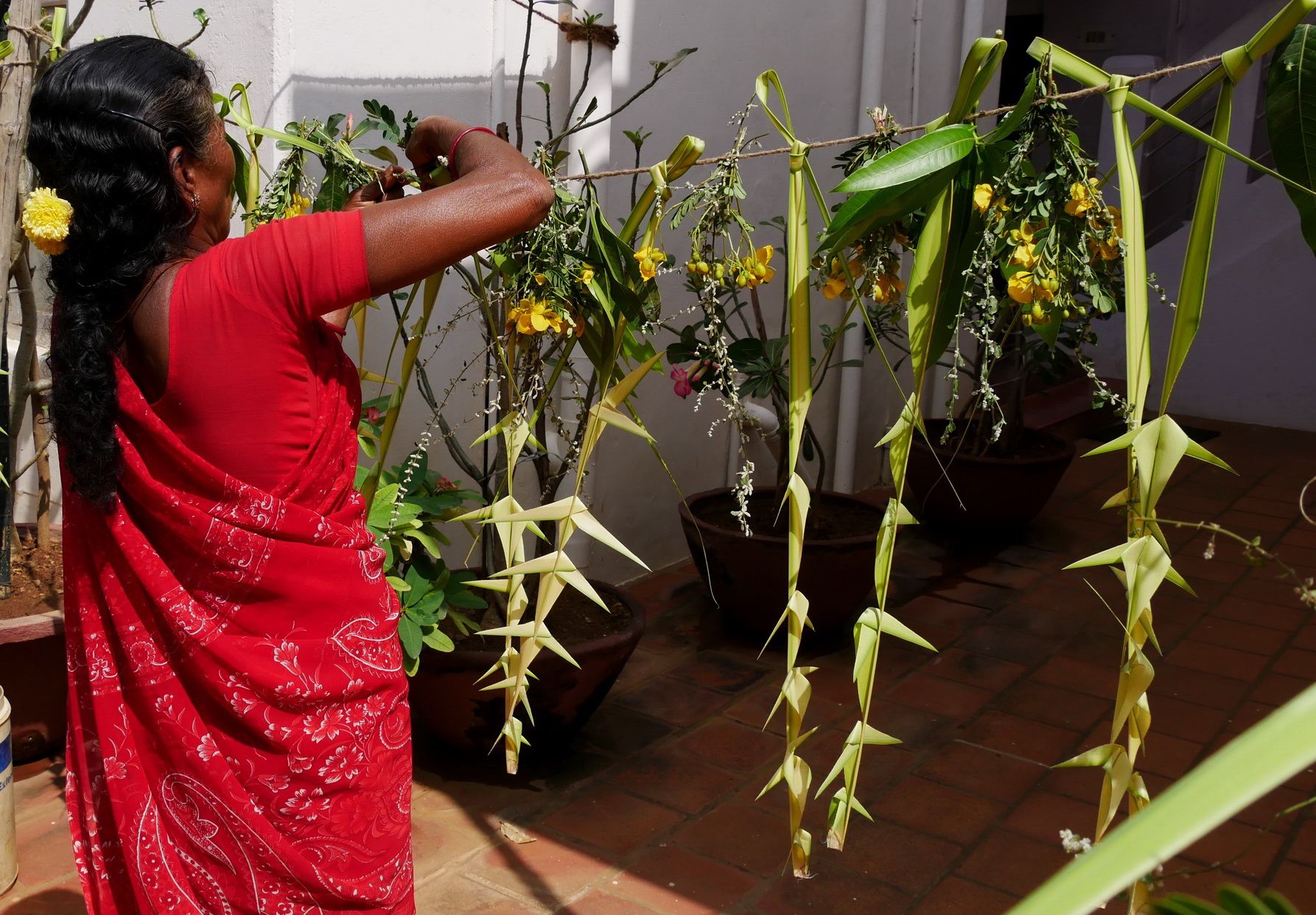
It is the time of the year when colours adorn kolam and the younger generation seems to favour them bright and eye catching. Many local shops sell packets of various hues, much to the delight of everyone. Most of them are chemical but lately, NGOs have started making powder from saw dust and discarded temple flowers. The latter are pulverised and mixed with arrowroot powder and flour to be reborn as eco-friendly rangoli colours.
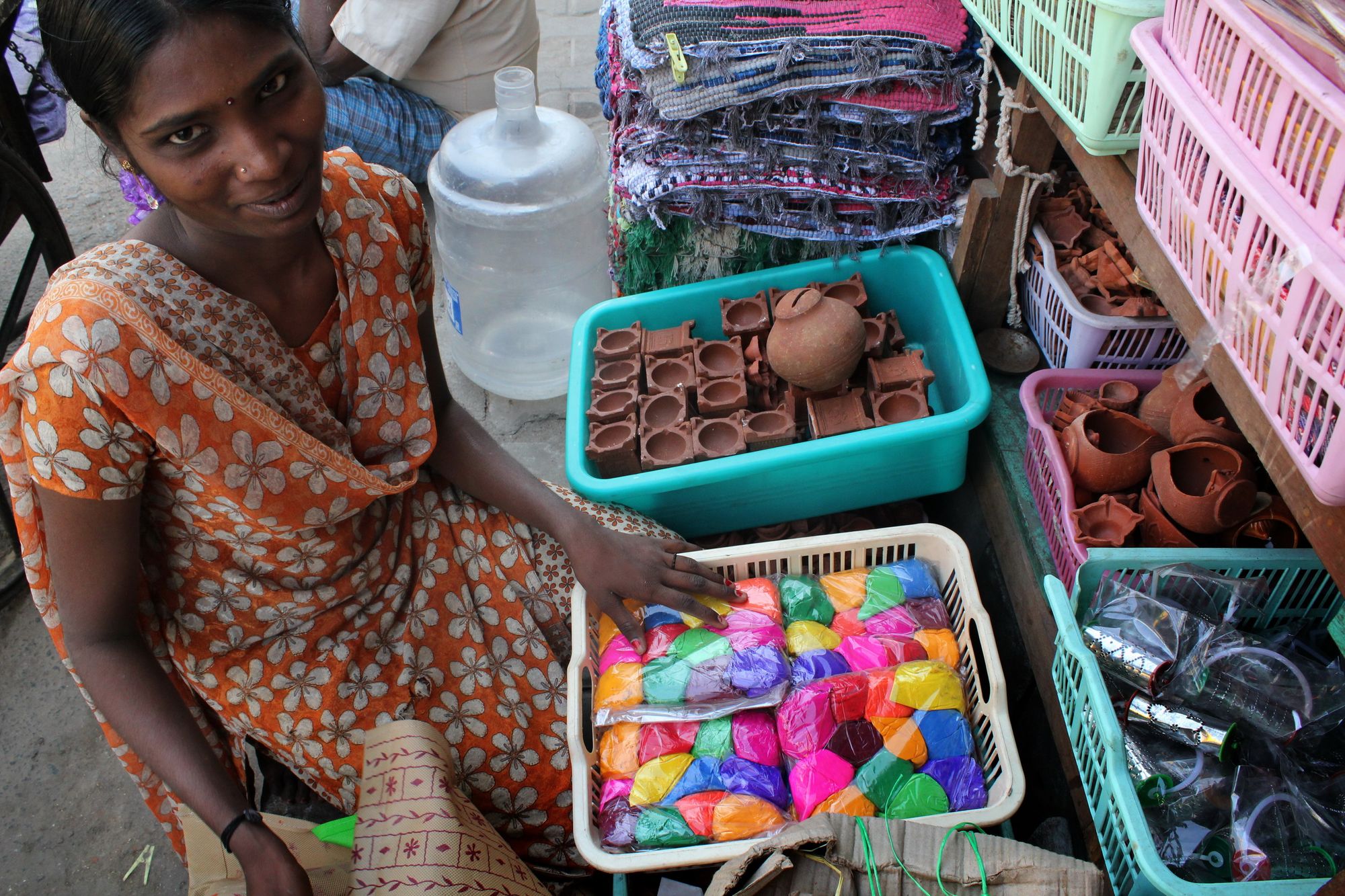
Personally, I have a preference for the austere white kolam enhanced by red oxyde as the lines defining their contours are light or strong, bold, luminous, emotional, ample, lyrical just like intimate calligraphy. Lines and dots whisper the story of women's hands when colours tend to hide the emotional depth of their writing.
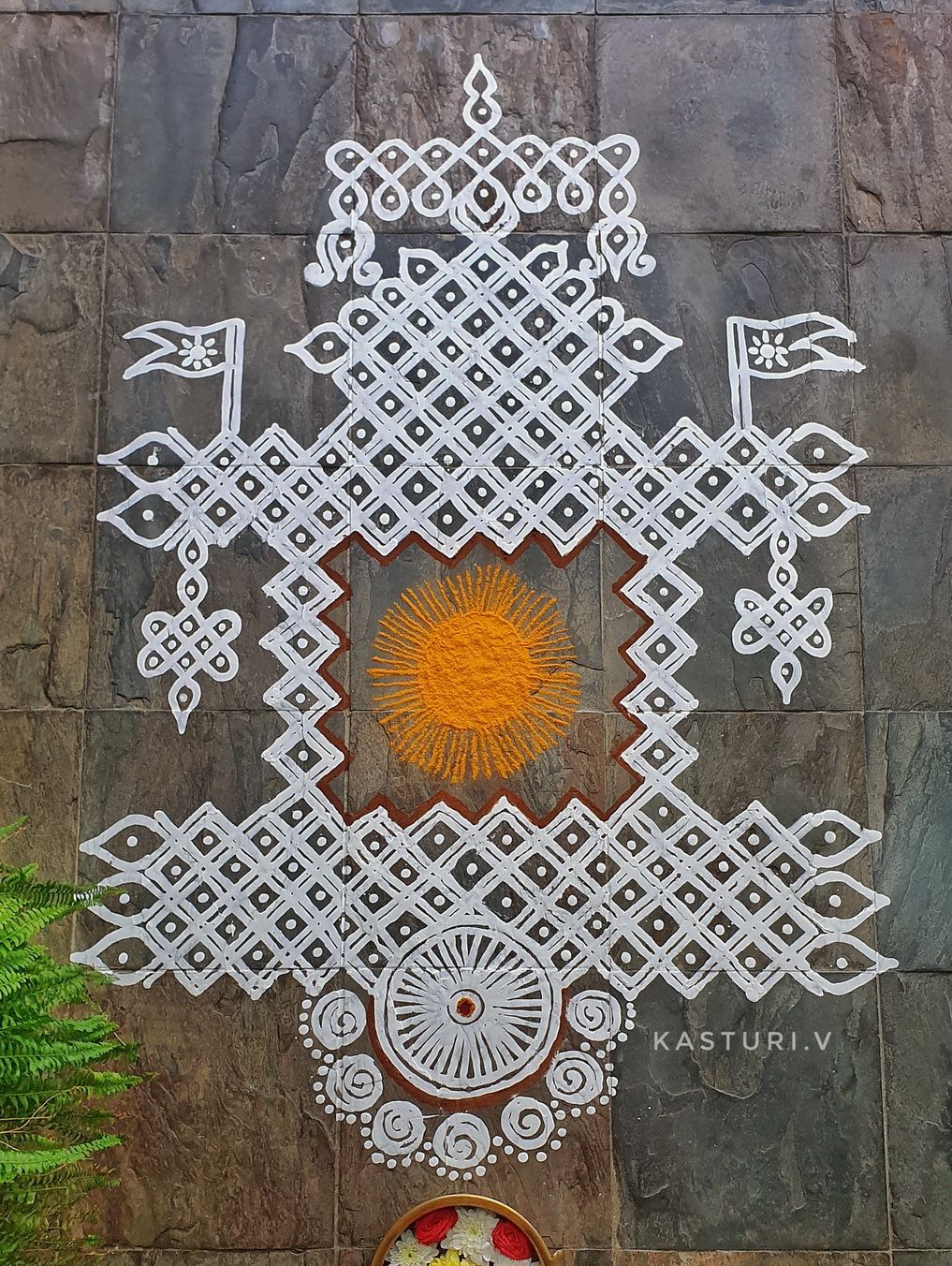
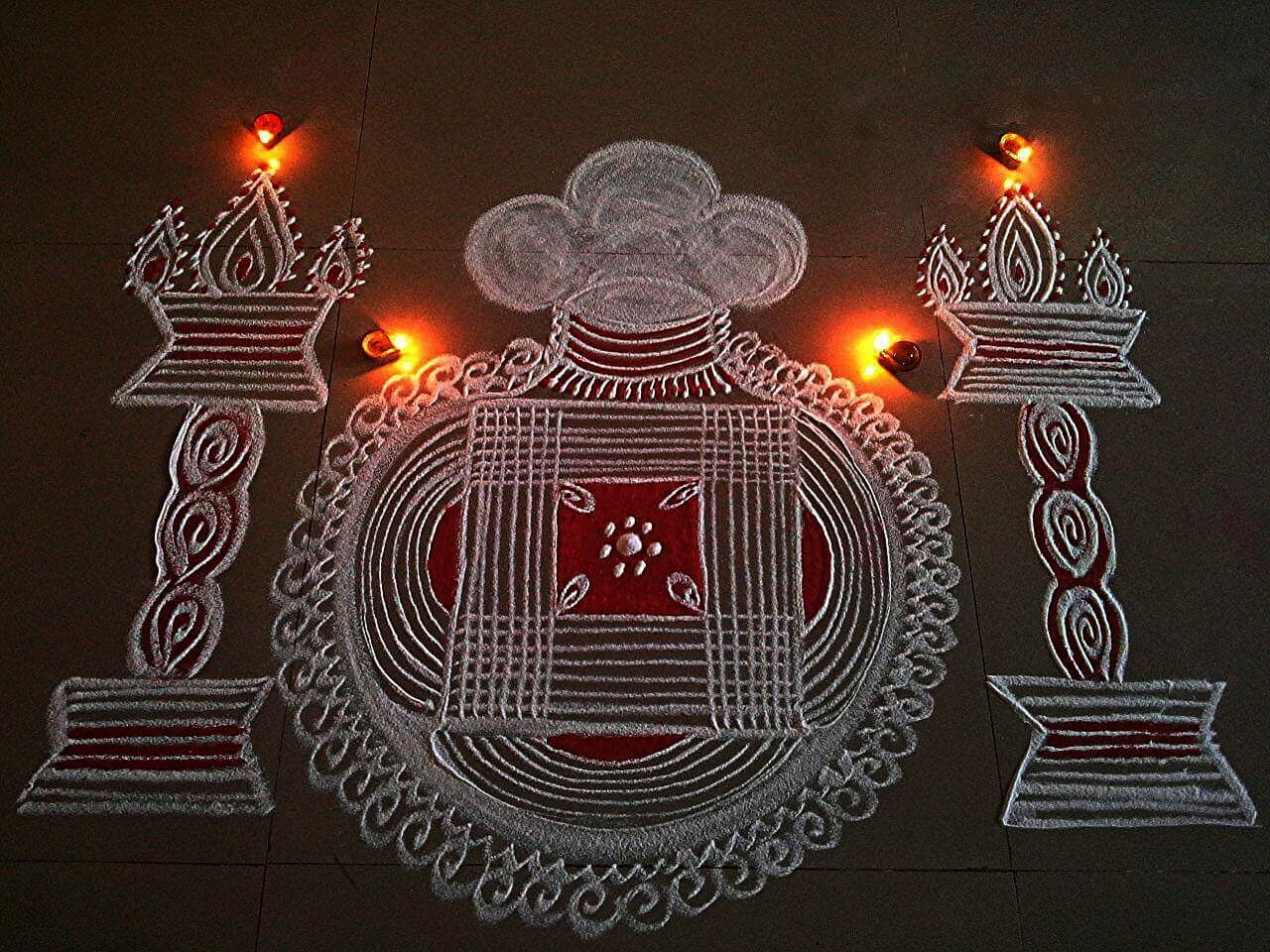
Joyfully, people will select painted or plain wide-rimmed clay pots that will be used to cook the "pongal" dish until it begins to boil and overflow to exultant cries of "Pongalo! Pongal!" while one or more participants blow a conch. The two varieties of pongal are the sweet chakarai pongal and venn pongal, a spicy version of it, delectably cooked in clarified butter. A pot topped with a coronet of mango leaves and a coconut is an essential element of many Hindu ceremonies.
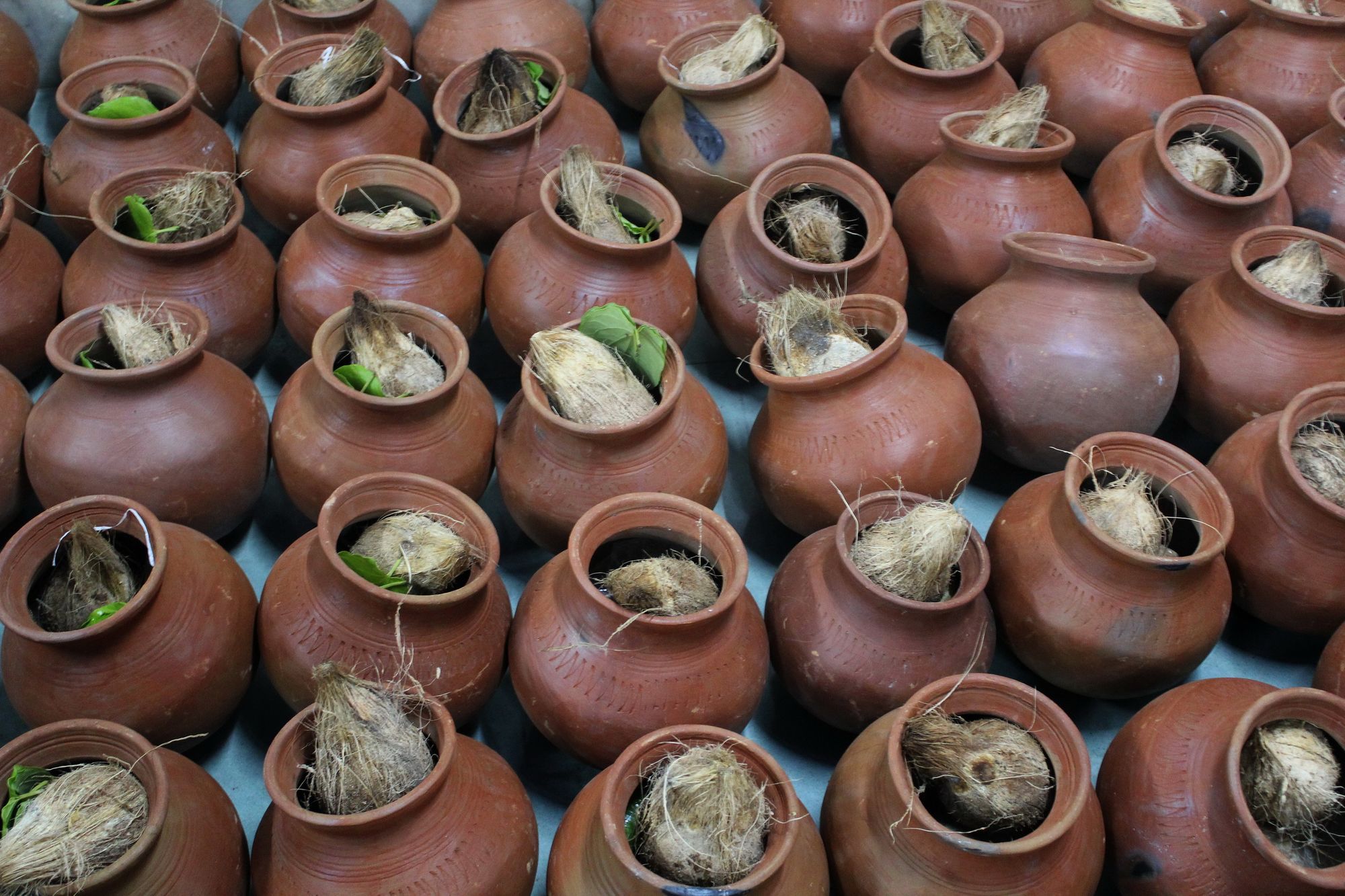

The pot is a symbol of abundance and a recurring theme as well in the kolam designs during pongal. It is either shown with rice balls that pile up on top of each other or with milk froth foaming out of the mouth, like the overflowing milk rice preparation. Around the kolam are displayed sugarcane, turmeric roots, oil lamps, and the sun as the central figure.


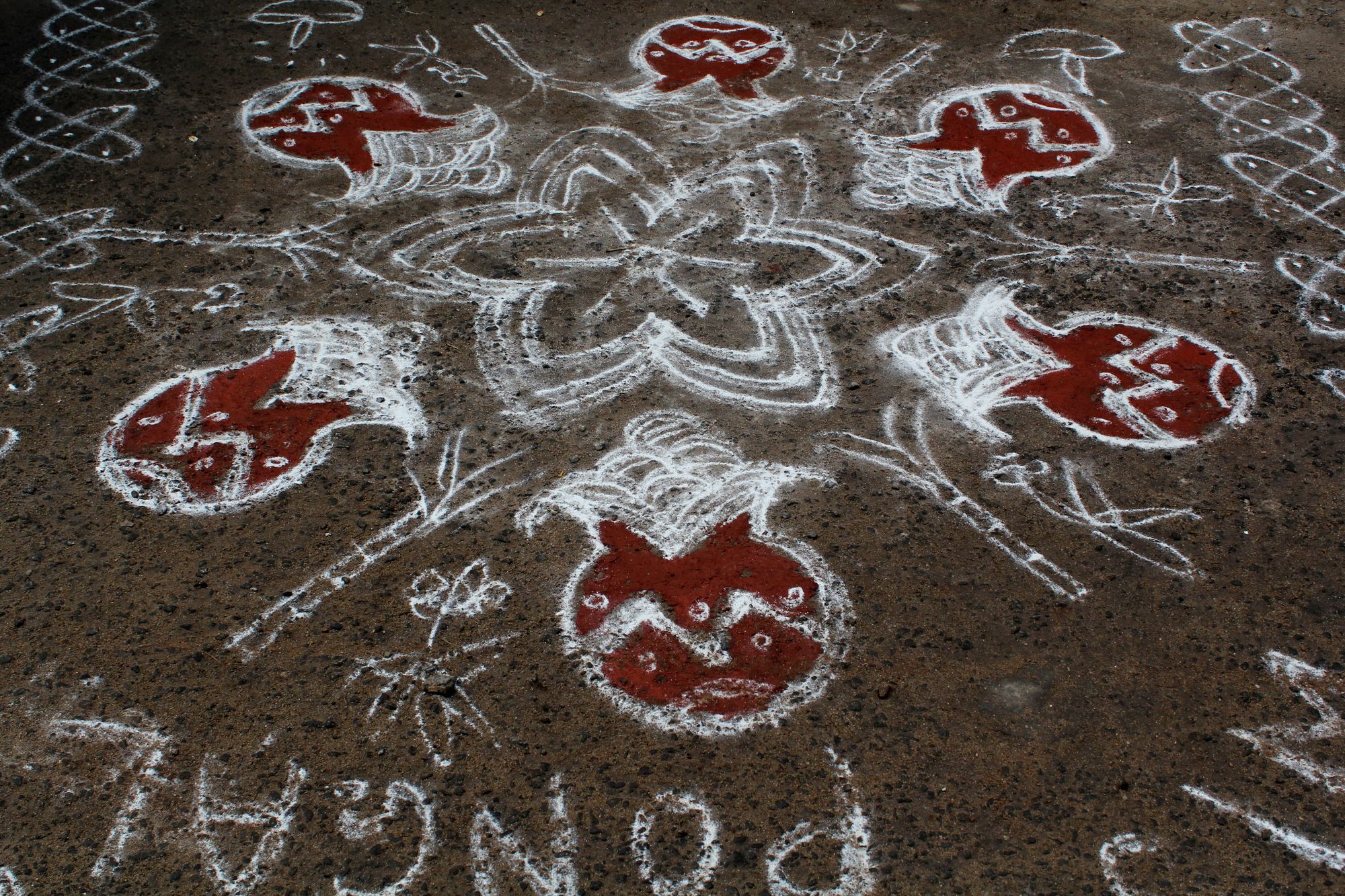
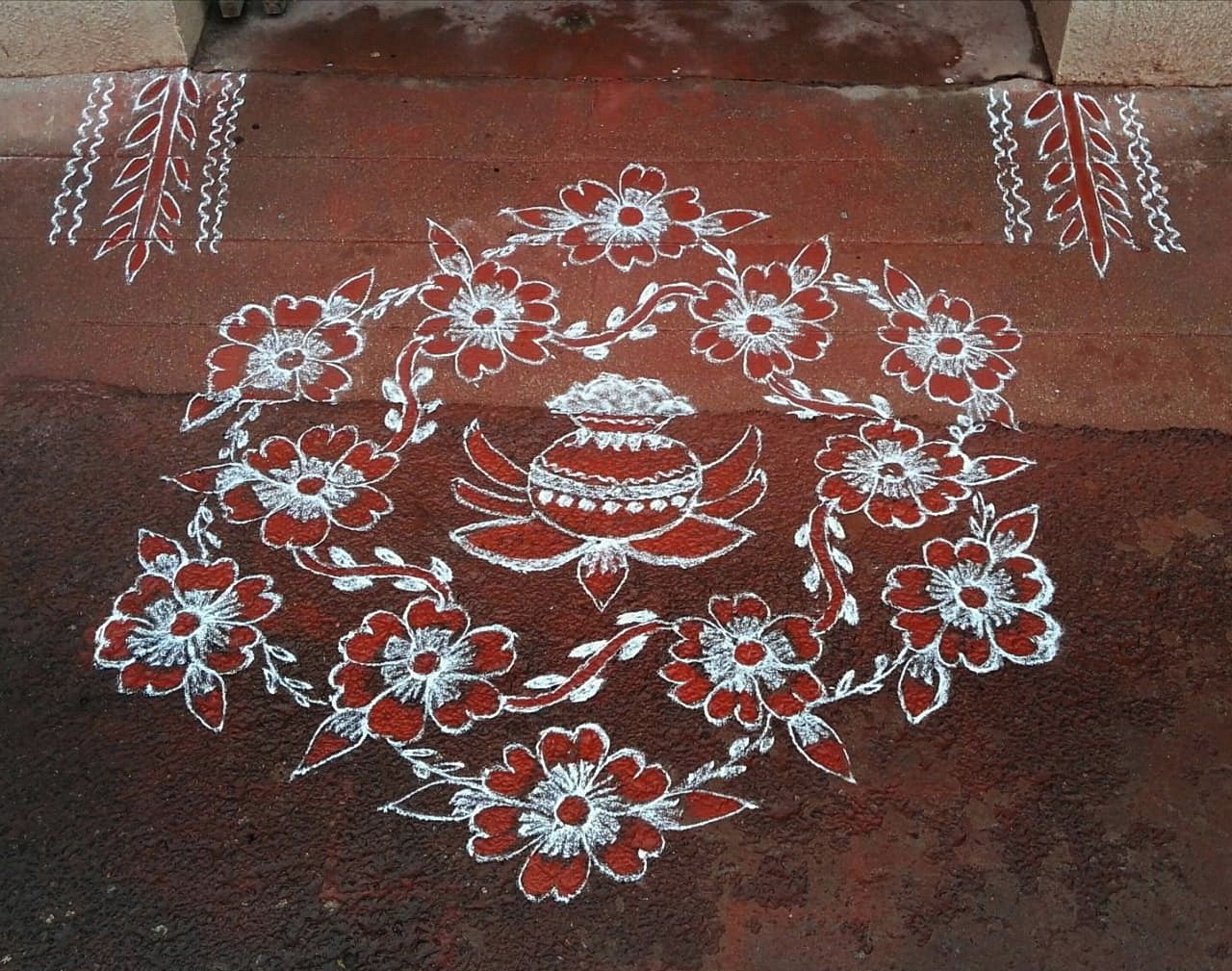


Perum Pongal at Subhadra's home
My first Pongal in Chennai was memorable. It was the first time that I would celebrate a festival with a Tamil family. The next morning, after my arrival, I was awakened by devotional chanting coming from the courtyard. There, around the sacred basil, I saw the householder along with several men dancing in a circle and clapping hands while singing together with great joy. As soon as the bhajans (devotional hymns) were over, they vanished like a flock of birds and left the yard to Subhadra, the lady of the house who came to draw a chariot using the wet technic called maavu kolam. The aesthetic of kolam is traditionally associated with dry rice flour laid in fine lines, or wet rice flour spread out in thicker, wavy strips. During festive seasons and auspicious days in a home, women favour the latter as it lasts longer. Once dry, Subhadra arranged upon the kolam all the required items for the sun worship ritual. Before that, she invited me to her private quarters to select one of her Madisar; a nine-yard sari worn by Tamil brahmins on festive occasions and religious ceremonies. I had already adopted this unique and unstitched garment called sari but this one was much longer and the draping between the legs was an experience by itself. Finally, the rice dish was ready and placed on the chariot design; living in the suburbs, the family had not arranged the usual brick hearth and therefore prepared the dish on the kitchen stove. At the time of serving the sweet rice, I had the surprise of finding the gift of a brand new five rupees coin that I cherish to this day.
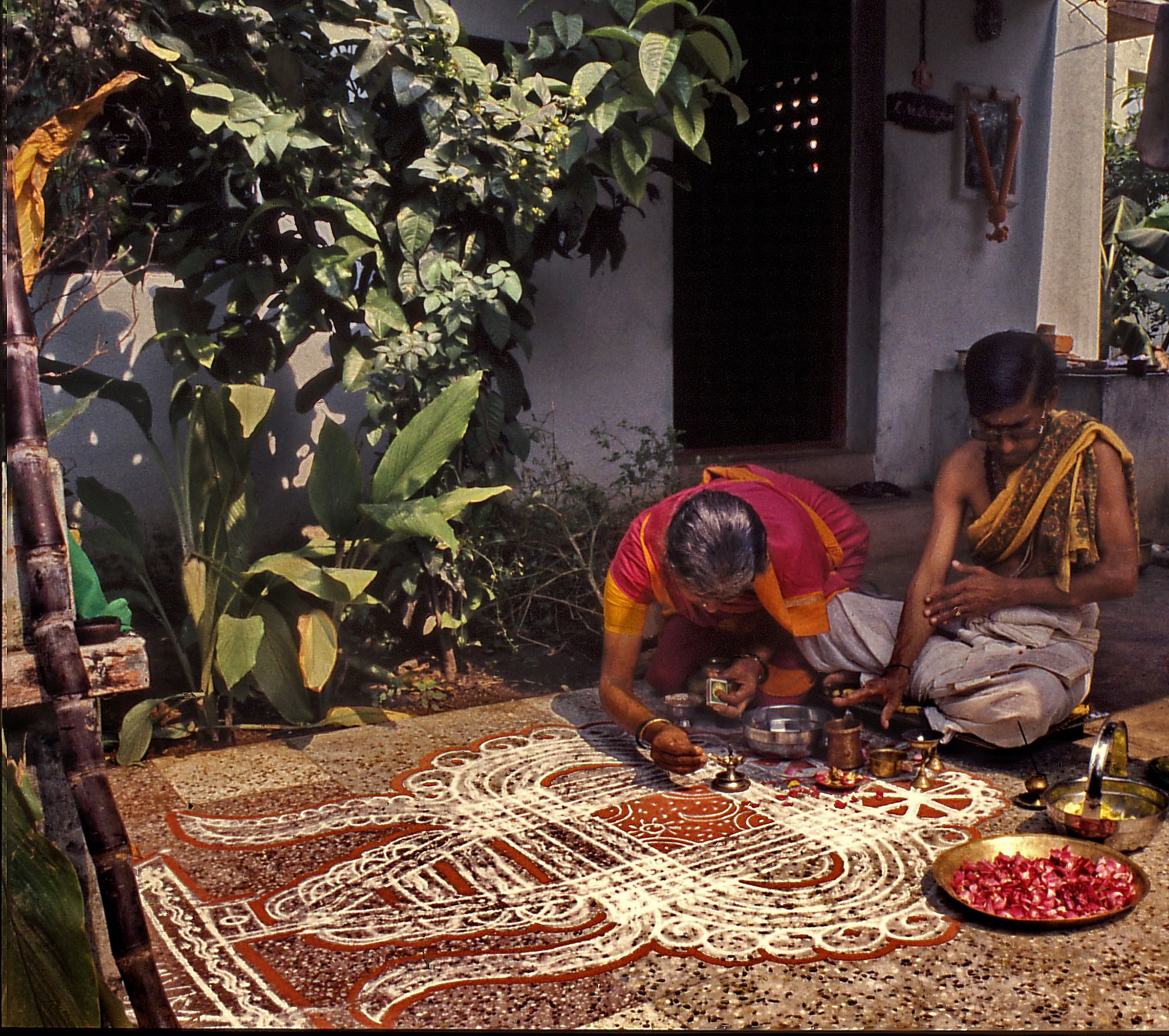

The header image has been drawn by Gomathi Kumarakrishnan.

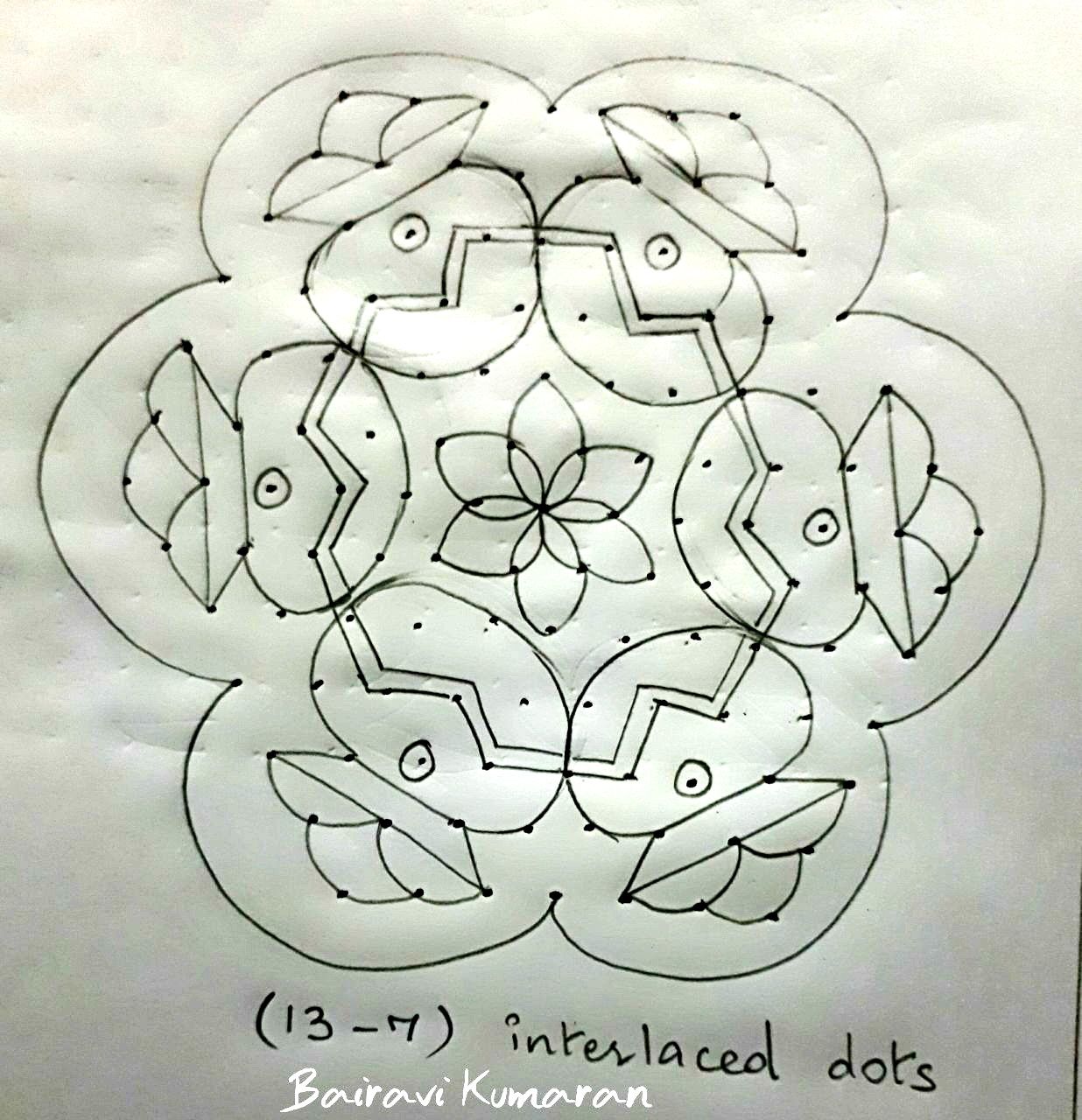


To be continued..
